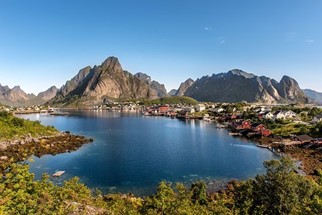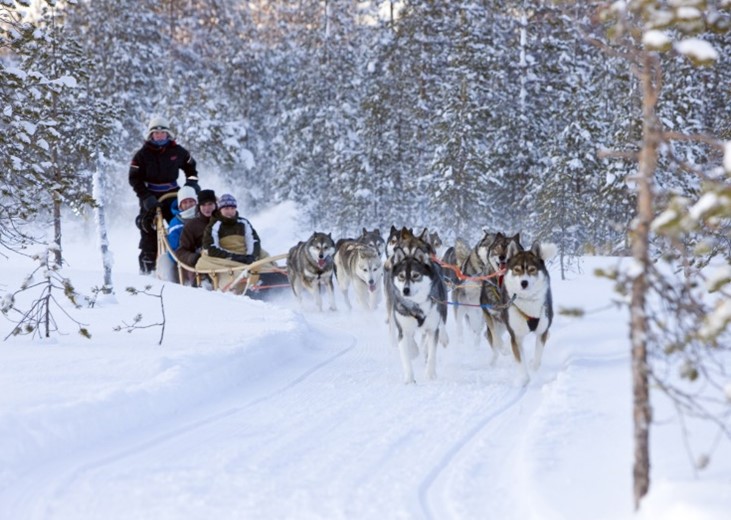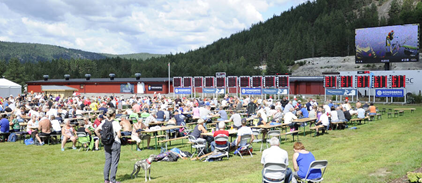Guest post by Ove Oklevik, Associate Professor, Grzegorz Kwiatkowski, Associate Professor, and Gurid Gjøstein Karevoll, Assistant Professor, at Western Norway University of Applied Sciences.
During the last decades, most Nordic destinations have tried to increase the number of tourist arrivals. In recent years, before the pandemic, tourist arrivals secured continued growth in Nordic countries’ most popular destinations. This growth has in turn caused crowding challenges. Crowding is labelled ‘overtourism’ in academic literature and causes an ongoing debate among researchers. But overtourism has created a substantial public debate as well. One of the dilemmas is that overtourism is related to a few destinations only. Most of the areas in the Nordics are underpopulated and under-visited. There is room for a substantial increase in the number of inhabitants and visitors in these areas.
Overtourism in the Nordic Countries
Let us give some examples of overtourism from the pre-pandemic period in Nordic countries. These examples are not exhaustive, but might function as illustrations. In Denmark, Copenhagen is the most attractive destination. A high share of the visitors to the capital of Denmark – around 87% – tend to stay in and around the inner-city, especially the canal district Nyhavn. Nyhavn is well-known for its colourful merchant houses. The concentrated inflow of tourists in the city’s heart strains urban life with increased noise and traffic levels.

In Norway, examples of overtourism are Flåm and Lofoten. Several newspaper articles have documented the problem of large queues. In summer 2019, travellers had to wait for 5 hours to get a place on a ferry to Lofoten, a group of islands in Nothern Norway. On the mainland, in the same area, no queuing occurred.

Lapland is Finland’s northernmost region bordering Russia, Sweden, Norway and the Baltic Sea. Lapland is famous for its ski resorts, Northern Lights and subarctic wilderness. However, the most popular activity in recent years is husky rides. The growing interest in husky sledging puts the animals at risk. The tourist season in this region is short, between three and four months every year. A short season, combined with increasing demand, put a lot of stress on dogs and operators.

The arrival of the pandemic
Declared as a pandemic on 11 March 2020 by the World Health Organisation (WHO), the Coronavirus (Covid-19) outbreak has heavily influenced the travel and tourism industry worldwide. The travel and tourism sectors have been affected by travel restrictions, quarantines, lockdowns and mandatory testing. These pandemic measures have created volatile and unpredictable business and travel environments.The global tourism industry now looks into a third year of uncertainty. Some researchers argue that the COVID-19 crisis should be a turning point, and that a return to pre-pandemic overtourism phenomena is undesirable and also unlikely to happen. However, according to Gössling and Scheiggart (2021) there is minimal evidence that the crisis has changed or will change tourism at an aggregated level. On this question, the future will give us the answers.
The pandemic has also taught us some other lessons regarding to how people react to different behaviour from government, individuals and companies. Based on a research project funded by the research council of Norway, with researchers from Italy, the US and Norway, we have now learned more about how these actions might influence travel patterns.
In an experiment, researchers exposed respondents for information containing a government that responded to the pandemic in either a good or bad way. The study showed that bad politics regarding government responses to the pandemic (i.e. ignoring the dangers of the virus, not imposing any social distancing, and not listening to medical advice) might generate bad feelings like anger, disgust, and scornfulness in the population. Those negative feelings will, in turn, impact travel intentions among tourists. Bad governmental response of pandemics might impose a stronger desire (and more travelling too) to travel among the population. However, the impact is evident only for one group of people. As human beings, we might be described with two different individual characteristics. Some of us are highly individualistic, and others are highly collectivistic-oriented. Being highly individualistic means that they are highly competitive oriented, like to make decisions on their own, and are also more likely to travel alone or organize their travel as an individual. Their counterparts are collectivistic-oriented persons, who are more concerned about their group members’ well-being than their own needs, and they are more likely to travel in groups. Most people can be placed along a continuum between those two extreme points. However, the distinction between individualism and collectivism might help us better understand possibilities and challenges regarding travel patterns in post-pandemic time.

The research from Western Norway University of Applied Sciences shows that individualistically oriented tourists tend to travel in defiance if the government in their country mistreat a pandemic situation. The collectivistic oriented tourists don’t have this tendency. Collectivistic oriented tourists have a low desire to travel during a pandemic, independently of how their government treat the pandemic. Combined with existing knowledge that individualistically oriented tourists have higher spending, are more involved in special interest tourism, and tend to stay longer in a travelled area, those tourists might be a part of the solution of the overtorusim issue. Tourists visiting longer in an area are more likely to spread than short-time visitors. Short-time visitors are more likely only to target the main ( and crowdy) attractions. The individualistically oriented tourists represent more diverse interests than their collectivistic counterparts too. This might contribute to spreading those tourists on many different types of activities and thereby reduce the overtourism problem.

One example of a special interest activity in Norway is “Landsskyttarstevent” (i.e. a shooting festival). The festival is hosted in rural areas in Norway. The event is a one-time activity that lasts for eight days and it draws 10-15.000 people every year. And more important, it’s located outside the main tourist destinations in the country.
References
Overtourism in Finnish Lapland puts huskies at risk – TAN (travelandynews.com)
Is Copenhagen the latest city to fall victim to overtourism? – Lonely Planet
Står fem timer i fergekø for å komme til Lofoten – NRK Nordland
Gössling, S. and N Schweiggart (2022). Two years of COVID-19 and tourism: what we learned, and what we should have learned. Journal of Sustainable Tourism. 30(4)
Oklevik, O., Gössling, S., Hall, M., Steen-Jacobsen, K., Grøtte I.P. (2019). Overtourism, optimization and destination performance indicators: a case study of activities in Fjord Norway. Journal of Sustainable Tourism. 27(12); 1804-1824.
Oklevik. O, Kwiatkowksi, G., Preuss, H. and A. Kurdyś-Kujawska (2021). Contextual engagement in event visitors’ experience and satisfaction. Scandinavian Journal of Hospitality and Tourism.
